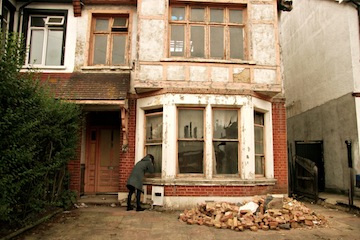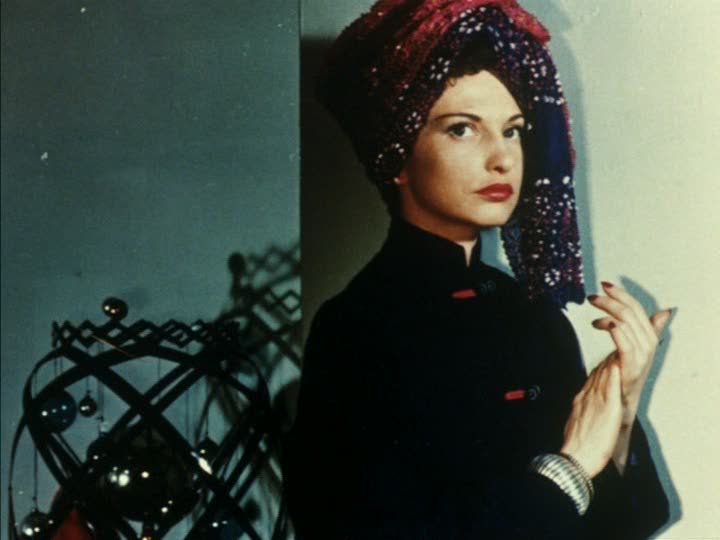Experimental Cinema: A Problem of Definition by Anna Gronau (1979)
(Originally published in Parallelogramme 3 1978-79, Spaces by Artists published by Annpac editor: Tanya Rosenberg, Toronto, 1978-79)
Since its beginnings a century ago cinema has developed in a number of directions. One such direction which has been variously called “experimental,” “visionary,” “avant-garde,” “independent,” etc. can be characterized in a number of ways: noncommercial rather than commercial, non-narrative rather than narrative, formalist rather than allegorical, and abstract rather than representational. This type of cinema is generally produced outside the film industry, usually by a person working alone, often on a very small budget. In North America experimental film is usually defined, by its public and its makers, in terms of what it is not – i.e. it is not “Hollywood” – a somewhat defensive, if necessary, stance.
Film functions aesthetically on several levels, through two sensory media, and has an affinity with almost all other arts. The term “art,” however, has been adopted by the European “art” cinema – (Godard, Truffaut, Fellini, et al). “Art Cinema: ma deserve this title, it can be argued, that precludes its being applied to experimental film – whose ties to painting, sculpture, music, dance and other arts make the preclusion unfortunate.
Obviously the subtleties of terminology are not the only limits of the problem of definition. While painting and sculpture are less frequently confused with commercial art, experimental film is constantly seen as “not as good as,” or “practice for” Hollywood-style films. The entertainment industry’s criteria are applied often unquestionably to experimental film. Like other artists doing innovative work, experimental filmmakers can expect the art establishment and the public to be very unaccepting of their work. The problem with film, however, is that even the very best experimental flim work may never be accepted outside of a small special-interest group, due to narrative film’s virtual aesthetic monopoly. The terminology itself belies the depth of the confusion. To say “experimental painting,” or “experimental video,” would be redundant. And the word “avant-garde” when describing other media, means “ahead of,” but in film, it means “other than” – implying a permanent rift between the two modes.
The dominance of the Hollywood film style as a standard for all uses of the medium is more than a question of the triumph of entertainment over art, and big money over little money. In fact, the effect of the big screen and the cathartic qualities of this type of film are so intense that most of us are totally convinced by their form, if not their content. Even those who are quite unperturbed by any amount of innovation in other less involving media, are often reluctant to accept “unrealistic,” (un-Hollywood) manipulations of time and image in film. It is the sheer power of the medium which works this magic.
Presumably, this reluctance to accept variation in film form accounts for the critical and curatorial neglect that experimental film suffers. The larger art world treats film as an afterthought. At best it is occasionally written about in art publications, or shown sporadically in galleries, relegated to back rooms and odd hours.
Internationally, experimental film is thus ghettoized. Those involved in the medium find themselves in a surprisingly small world. The avant-garde film has a relatively short history. There are only a handful of serious critics, and a relatively small amount of written material on the subject. The entire body of famous works would not require a life-time to view. It ends up being a cozy but claustrophobic environment.
There has long been an understandable notion in this field that if you want to make/show/distribute/promote experimental film you have to do it yourself. Since the Sixties the need has been answered by the formation of co-operatives, necessary for economic reasons, certainly, but also for moral support. Because of the every small number of people using film I this way, plugging into the international circuit of co-operative groups is the best, perhaps the only, way to see what is being doe and to have one’s work seen. The larger art community, at present, is not really a very good bet. The danger of co-operatives, though, is that they may become ingrown, giving films produced by members a strongly characteristic aesthetic, often to the detriment of the work and its chance for appreciation outside of the core group.
In the U.S., despite a popular Sixties stereotype of the artist as maverick loner, the first permanent exhibition facility and film archive for experimental film, The Anthology Film Archives, was established by a group of filmmakers and critics. The Millennium Film Workshop, an exhibition place and equipment co-op, also started in the Sixties, is still run by and for filmmakers. Since these first groups were established other similar centres have developed in major cities of the U.S., often in conjunction with university film study courses.
In Canada, the lack of a strong film industry, such as Hollywood’s, has meant that generally we have not developed the same kind of strong alternative aesthetic. The first film co-op in Canada was the Toronto Filmmakers’ Co-op, formed in the early Seventies. It was a production co-op, bu9t not strictly for experimental filmmakers. Again, because of the lack of a large commercial market for film, even commercial filmmakers in this country have needed to become involved with equipment co-ops. The Toronto Co-op eventually was running as a business serving these small production companies. In the end, financial bungling led to its bankruptcy, but those few individuals making experimental films, who had been involved from the beginnings, had already been excluded.
At present there are a number of production co-ops across this country, each with its own particular direction: the Newfoundland Co-op, connected with a local theatre group, makes mostly dramatic films; Halifax’s direction is documentary; Quebec production groups are mainly concerned with socio-political themes; and several Prairie province co-ops are interested in narrative and documentary forms. Many of these co-operatives look to their local National Film Board office for lab, editing and production assistance.
Experimental cinema, in its purest sense, is not the only interest among Canadian film production co-ops; however, several groups for exhibition and distribution of experimental film do exist. Pumps Gallery in Vancouver holds monthly screenings; Le Cinema Parallele in Montreal exhibits and distributes films –I many of them experimental; the Funnel in Toronto is a theatre run mostly by filmmakers, which is devoted to showing experimental film; and the Canadian Filmmakers’ Distribution Centre, also in Toronto, has recently hired an experimental film officer and at the time of writing is engaged in a debate on the Centre’s future direction – whether to handle all types of film or just experimental.
Obviously many individuals in Canada are using film in this way, independent of any co-op group – some in isolation, some at film schools and universities. Artists in other media make use of film for para-cinematic performances and installations. Such individuals could conceivably benefit from more co-operatives for the production of innovative experimental film work.
In Europe, the so-called “co-op avant-garde” has its equivalent to Hollywood in the “art cinema.” The London Film Co-op, the Paris Films Co-op, and other groups in West Germany and the Netherlands, make highly formalized, structural films, much to the consternation of those who support a cinema of political allegory. This rift has prompted British critics to define “two avant-gardes” and to suggest that there is much to be gained through the merging of the two. For narrative filmmakers to employ devices invented by the experimentalists is nothing new, however this suggestion seems to have given birth to a wave of “new narrative” films: narratives displaying an increased emphasis on formal relationships. Particularly in Britain, the “co-op” avant-garde is now making structural films examining the nature of narrative form. These hybrid products of two strains of filmmaking are not necessarily stronger than the original formats, though time may change this. One suspects that there was a certain amount of critical irresponsibility here. On the one hand, experimental film was defined as being more or less the poor second cousin of the elitist bourgeois art world, it’s fault lying in its inaccessibility. On the other hand, the work of the “auteur” filmmakers is defined as not being sophisticated enough. The suggested remedy is that the two become one. Which each may well have lessons to learn from the other, to suggest that they would improve by assimilating seems to imply that the “fault” is not in the films themselves, but in the critics’ inability to understand either kind. A disservice is hence done to the “auteurs” and to the experimental filmmakers. Again, experimental film is defined in terms which are not necessarily applicable to it.
The situation in North America is quite different. Many filmmakers are struggling with a criticism which exercises a virtual strangle-hold on the medium. P. Adams Sitney is the Clement Greenberg-figure of film. It may, at one time, have been necessary to practice a criticism which was mainly descriptive, and a defense of a particular kind of filmmaking endeavor; but the result has been the canonization of a given body of work, while other films of the same period are practically threatened with extinction. Too, the formula has been so well-defined, so many times, that films following it are produced in abundance, while innovation does not receive the attention it deserves.
Canada, of course, is influenced by American thought. Our problem with criticism, however, is the lack of it, and/or the poor quality of it. There is no experimental film critic in Canada, and art critics usually ignore film or make the inevitable (unfavourable) comparisons to Hollywood and European “art cinema.” The use of super 8 film instead of 16mm is a significant new trend, worth noting as it may well bring new impetus, direction and ultimately a more integral set of definitions to the movement. Price, portability, accessibility and new, sophisticated, reliable equipment are incentives for its use. Although there is still a stigma regarding distribution and exhibition of super 8, some filmmakers avoid this by making 16mm prints of their super 8 originals. They are visibly looser. Often they use sync sound which is easy and inexpensive in this gauge and permits new kinds of investigations previously unavailable to less wealthy filmmakers. The manufacturers of super 8 equipment are naturally interested in its commercial potential. They promote it as providing a scaled-down version of standards set by TV and Hollywood, rather than as a separate medium with its own properties, and they continue to come out with more sophisticated, “easy-to-use,” but less flexible, gadgetry. While this cannot impede someone who wants to express an idea inexpensively, it does continue the myth and mystique of film. Most people that that films are expensive and technically difficult to make. This seems to be an evolutionary stage in various media – even the printed word was at one time thought to be too complicated for most people to master. With film, such spectres as stardom, TV, big bucks, and so on, surround the medium with mystery.
The various images which are applied to the medium of film only prevent it from being used to the fullest as a tool for the expression of ideas. Film has an incredible potential as an artistic medium. Perhaps a greater dialogue internationally and locally, and with artists in other media, can help re-define film and free it from those definitions that only serve to inhibit it.






